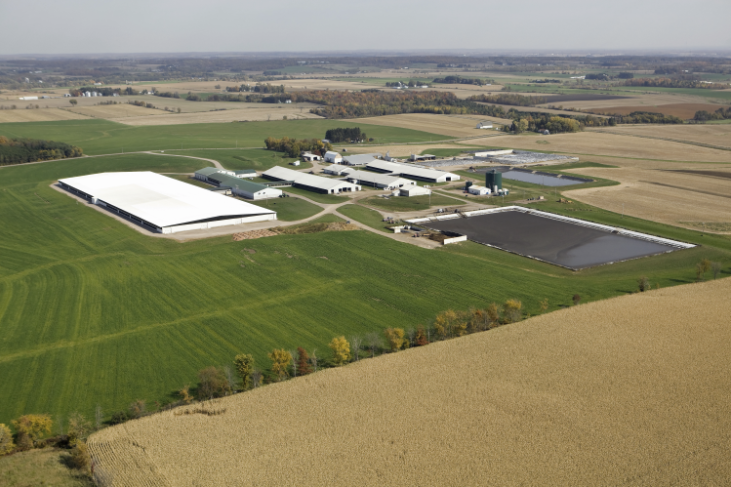Just two days ago, I got off the phone with a 25-year-old corn farmer named Billy who recently became a father. He explained to me that only a few days after the baby was born, he was given the chance to see the farm’s financials for the first time.
He was shocked to find out the farm’s cost of production was $3.45 and corn was trading at $3.25 that day. The farm was bleeding money for a while, and he had no idea. After asking around, he anticipated market prices remaining low for the next few years and was very concerned. The farm’s equipment was very old, the farm’s debt-to-equity ratio was high, and his dad wouldn’t listen to a single idea he had to turn a profit. On the trajectory the farm was heading, they would be insolvent by 2022, and suddenly Billy had concerns for his family’s future. Would his kids grow up on the farm, or would their memories be of rough days being pushed off the farm?
I had a similar crisis when farming with my dad. When I went home to farm with my dad, our cost of production was $1.20 to produce a pound of beef, and we were getting paid 83 cents to $1 for a pound of beef at auction. In other words, we were bleeding cash similar to Billy’s situation. It’s possible to endure it for a couple of years, but what if it went on for longer? The reality for us was: The beef industry back in the early ’90s had entered into a new price cycle significantly lower than what we had experienced in the ’70s and ’80s due to changes in consumer demand. And then there was our outdated equipment that was constantly breaking down. We could not keep up with the neighbors. My mother said something had to change or else she was leaving. She was tired of her off-farm job subsidizing the farm’s survival. As a young farmer, I wasn’t just challenged with my future but the future of my parents’ marriage and the continuation of a seven-generation family tradition that meant the world to me.
But Dad was abrasive to any suggestions for change. If I said black, he would go and do white just to spite me. One day, he ploughed down my crops because my uncle commented that my crops looked better than his and would make more money.
I wondered for a long time: Why would he do that? What did I do wrong? This question consumed me.
I finally realized my mistake when I realized how I approached my family’s crisis. I came home from college to farm with my dad and immediately I began telling my dad what to do. Believe it or not, no farmer likes to be told what to do by his 21-year-old son, or anyone for that matter. What was the wrong word. It was the wrong approach. I should have first focused on “why.” Then how – and only then should I have proposed what to do.
The why should have been focused on getting our cost of production below the market lows. As I mentioned earlier, we were getting paid 83 cents for a pound of beef, but our cost of production was $1.20. We needed to somehow get our cost of production below 83 cents. Sure, the beef prices might rise any day, but we needed to address the harsh reality that they might not. If we got our cost of production below 83 cents and the markets shot up, we’d only be making more money, right? What I should have done was get my family to set a common goal of getting our cost of production below 80 cents. In other words, what I needed to do was to focus my family on a common why.
Once we had a common goal, we then needed to come to a common understanding of the how. The how wasn’t by changing a feed ration or buying a new piece of equipment. That was the what, which is the stage after. The how was fundamentally changing the culture of how we made decisions together. Instead of emotionally yelling ideas at each other across the barn yard, we needed to sit down like any other business on a weekly or monthly basis and discuss business ideas rationally. We needed to get better at listening to each other’s ideas, instead of instantly rejecting and insulting them.
Once we came to a consensus on a common why and developed how to discuss business together, we could then start suggesting ideas – what to do. We needed to throw out as many “whats” or potential money-saving/making ideas as we could muster. If we only adapted 10% of those ideas and they resulted in real changes that led to real results, we’d be golden. However, I failed to follow this process and, as a result, we failed both as a family and as a farm. My parents’ divorce and farm eventually becoming unviable. I told this story to Billy, and there was a long pause at the end of the phone after.
He said, “What do you want me to do, then?”
I said: “You do whatever you want to do, Billy; it’s your farm and ultimately your destiny. But I can tell you farmers don’t like to be told what to do. If you tried to change your farm without everyone else realizing there is a dire need to, change is going to get you nowhere. My suggestion is: You first get everyone motivated to a common goal and committed to a process of how you are going to get there.”
Focus on the why, then the how and then the what … not the other way around, as I learned from experience.
From the awkward pause on the end of the phone and the heartfelt “thank you ...” I had a happy feeling that his newborn will someday be walking in his daddy’s boots.





